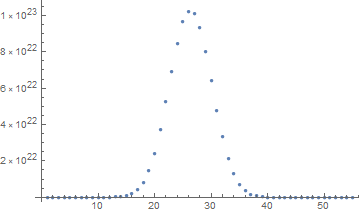In answering another MathOverflow question, I stumbled across the sequence of polynomials $Q_n(p)$ defined by the recurrence $$Q_n(p) = 1-\sum_{k=2}^{n-1} \binom{n-2}{k-2}(1-p)^{k(n-k)}Q_k(p).$$ Thus:
$Q_{2}(p) = 1$
$Q_{3}(p) = -p^2 + 2 p$
$Q_{4}(p) = -2 p^5 + 9 p^4 - 14 p^3 + 8 p^2$
$Q_{5}(p) = 6 p^9 - 48 p^8 + 162 p^7 - 298 p^6 + 318 p^5 - 189 p^4 + 50 p^3$
Numerical calculations up to $n=60$ suggest that:
- The lowest-degree term of $Q_n(p)$ is $2n^{n-3}p^{n-2}$.
- The coefficients of $Q_n(p)$ alternate in sign.
Are these true for all $n$?
As the title indicates, I'm especially puzzled about 2. Indeed, the original inspiration for the polynomials $Q_n(p)$ comes from a classic paper of E. N. Gilbert (Random graphs, Ann. Math. Stat. 30, 1141-1144 (1959); ZBL0168.40801) where the author studies the sequence of polynomials $P_n(p)$ given by the similar recurrence $$P_n(p) = 1 - \sum_{k=1}^{n-1} \binom{n-1}{k-1}(1-p)^{k(n-k)}P_k(p),$$ which do not have alternating coefficients.


